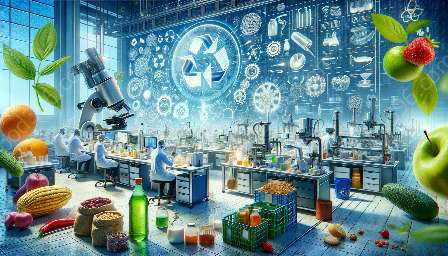Food preservation is a critical aspect of food science and technology, playing a crucial role in ensuring the safety, quality, and availability of various food products. It involves a range of techniques aimed at extending the shelf life of food while maintaining its nutritional value and flavor. This comprehensive guide explores the diverse methods of food preservation and their significance in food product development.
The Significance of Food Preservation in Food Product Development
Food preservation techniques are essential in food product development as they enable the creation of a wide variety of shelf-stable food products. By preserving food, it becomes possible to offer consumers year-round access to seasonal produce, minimize food waste, and improve the overall quality and safety of food products. Additionally, preservation techniques play a crucial role in ensuring the global distribution of food, making it possible to transport perishable goods across long distances without compromising their quality.
Understanding Food Preservation Techniques
Food preservation techniques can be broadly categorized into several methods, each with its unique approach to extending the shelf life of food. These methods include:
- Canning: Canning involves heating food in airtight containers to destroy or inactivate microorganisms, enzymes, and other potential spoilage agents. This process allows the food to be safely stored at room temperature for an extended period.
- Freezing: Freezing is a popular preservation method that involves lowering the temperature of food to below its freezing point, effectively slowing down the growth of spoilage organisms and preserving the quality of the food.
- Drying: Drying, or dehydration, removes the moisture from food, thereby inhibiting the growth of microorganisms and preventing spoilage. This method is widely used for preserving fruits, vegetables, and meats.
- Salting and Brining: Salt and brine solutions are used to preserve food by inhibiting the growth of spoilage-causing microorganisms. These methods are commonly used for preserving fish, meats, and certain fruits and vegetables.
- Fermentation: Fermentation involves the use of microorganisms such as bacteria, yeast, or molds to preserve food. This process not only extends the shelf life of food but also enhances its nutritional value and flavor.
- Pasteurization: Pasturization involves heating food to a specific temperature for a set period to eliminate harmful microorganisms without significantly altering the sensory characteristics of the food.
- Smoking: Smoking is a preservation method that involves exposing food to smoke from burning or smoldering plant materials. This imparts a distinctive flavor to the food while also acting as a preservative.
Integration with Food Science and Technology
Food preservation techniques are closely linked to food science and technology, as they involve a deep understanding of the biochemical and microbiological processes that influence food spoilage and preservation. Through the integration of advanced technology and scientific knowledge, food scientists and technologists continue to develop innovative preservation methods that improve the safety, quality, and sustainability of food products.
Furthermore, the field of food product development heavily relies on effective preservation techniques to create new and improved food products with extended shelf lives, better nutritional profiles, and enhanced sensory attributes. By leveraging the principles of food science and technology, product developers can optimize preservation methods to meet consumer demand for convenient, nutritious, and flavorful food choices.
Conclusion
Food preservation techniques are both an art and a science, playing a crucial role in the creation and distribution of safe, high-quality food products. In the dynamic landscape of food product development, these techniques continue to evolve, driven by advances in food science and technology. By recognizing the importance of food preservation and its intersection with product development, we can appreciate the immense impact these techniques have on the way we produce, consume, and enjoy food.

